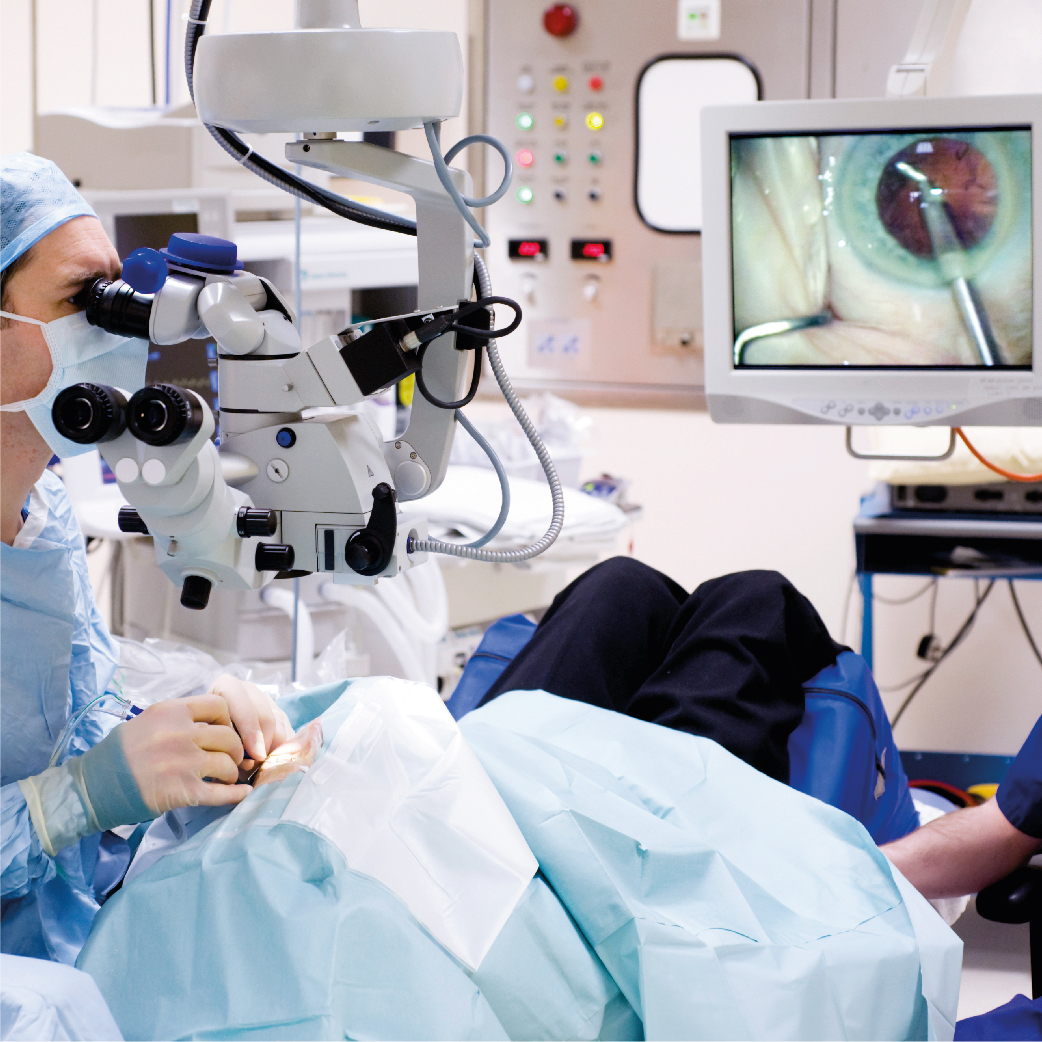Eye Surgery
What are some types of eye surgery?
Common types of eye surgery are explained below. The descriptions incorporate information provided by National Institutes of Health.
Blepharoplasty; To repair droopy eyelids, the doctor makes a small incision or incisions to remove skin and muscle and to remove or reposition fat.
Cataract surgery; A cataract is a cloudy area in the lens of your eye that can make it hard to see clearly. The doctor uses tiny tools to remove the cloudy lens and replace it with an artificial lens.
Corneal transplant; The doctor uses a special tool to keep your eye open while removing the damaged part of your cornea and replacing it with healthy donor tissue. Doctors can do a full thickness corneal transplant (penetrating keratoplasty) or a partial thickness transplant (lamellar keratoplasty).
Glaucoma surgeries; For glaucoma implants, the doctor inserts a tiny tube called a shunt into the white of your eye; the tube helps extra fluid drain out of your eye, lowering your eye pressure. In a trabeculectomy, the doctor creates a tiny opening in the top of your eye, under your eyelid, to allow the extra fluid to drain.


What İs Lasik?
LASIK (laser in-situ keratomileusis); In this laser eye surgery, the doctor uses a strong beam of light (laser) to change the shape of the cornea, which makes vision clearer for adults with nearsightedness, farsightedness or astigmatism. Photorefractive keratectomy, commonly called PRK, may be used as a LASIK alternative for patients with dry eyes or thin corneas.
Retina surgeries; There are several procedures for repairing a damaged or detached retina, some of which may be used in combination. To create small scars that will fix a tear or hole and help hold your retina in place, the doctor may apply a freezing probe (cryopexy) or shine a laser to make a small burn (photocoagulation).
Special anesthesia note for pneumatic retinopexy patients: If you are scheduled for any type of surgery soon after undergoing pneumatic retinopexy, it is critical that you let your physician anesthesiologist know about it before your surgery. Some anesthetics can interact with and change the size of the air bubble, which may remain present in your eye for five days to several months after your eye surgery.
Eye muscle surgery; Strabismus is a condition in which the eyes don’t move together as a pair; one eye might drift in, out, up or down. Surgery isn’t the only treatment option, but when it is needed, a surgeon attempts to restore the eye muscles to a proper position by using techniques that weaken or strengthen them. This could involve removing a section of muscle or reattaching a muscle to a different point in the eye.